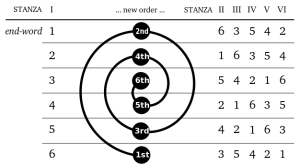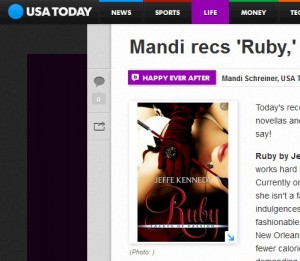 I made a point of spending time out in the garden this weekend, which meant I did a lot of reading. It’s lovely to reconnect with my reading-self. I’m on my 31st book read this year, so I feel like I’m making progress there!
I made a point of spending time out in the garden this weekend, which meant I did a lot of reading. It’s lovely to reconnect with my reading-self. I’m on my 31st book read this year, so I feel like I’m making progress there!
Last Friday, I mentioned that I’m wading into drafting Book 2 of my Twelve Kingdoms trilogy. This is the one I think of as The Flower Princess – at least until Kensington lets me know what they want the titles to be. So, I’m wrestling with setting up the conditions for this book, one of which is a change in point of view (POV).
See, in Book 1, The Middle Princess, the story is told in 1st person, from the POV of the heroine – the middle daughter of three. I toyed with adding in the hero’s POV – and even wrote some passages along the way – but ended up taking them out entirely. In The Flower Princess, the story moves to the youngest daughter, so I’m writing it in 1st person, from her POV.
This is good and right and what I planned to do.
But I keep having *other* ideas. Like I want to cut away to the first princess’s POV – mainly because I miss her. And I’m struggling with working in the hero. It would be much easier to build the story by including his POV, maybe in little 3rd person snippets. It would be much easier to build the story by gathering in other characters’ POVs, too. I got all excited about these possibilities, to make my job easier – and then stopped myself.
Because I recalled that I recently read the second book in a Fantasy Romance series that my agent compared to mine. I’d loved the first book – 1st person heroine’s POV, too – and eagerly looked forward to the release of the second book. In the sequel, the author kept the heroine’s 1st person POV and added alternating chapter’s of the hero’s 3rd person POV. Now I understood why she’d made that choice, because I was in the same position.
However – and this is a big caveat – as a reader, I hated it. It could be a “just me” thing, but I ended up not enjoying the sequel nearly as much. I’ve read other books that combine 1st and 3rd like that and I haven’t really liked them either. The thing is, even if this IS a “just me” thing, I need to be true to my own aesthetic. If I disliked it as a reader, it’s not fair for me to use the device as a writer, simply because it will make my job easier. If it would make the story better, then sure. My reading experience, though, leads me to believe it would not make the story better. Just less work.
The whole thought process – a lot of which occurred in the walled garden above – made me think of sestinas.
Exactly where you were going, too? Thought so!
Okay, okay – if you don’t know, a sestina is a complex poetic form. The official definition:
a structured 39-line poetic form consisting of six stanzas of six lines each, followed by a three-line stanza… The words that end each line of the first stanza are used as line endings in each of the following stanzas, rotated in a set pattern.
Did you get that?Here’s a little schematic to help you out.
Okay, now go write one and come back.
I’ll wait.
Yeah, it’s kind of like calculus for poets.
And yes, I’ve written them, back in some level of schooling. They make an interesting exercise for a writer because the discipline involved. It makes you think hard about your craft. Words can’t be employed willy-nilly, but must be carefully selected and repeated.
It occurred to me that making myself stick to the form I’d chosen for The Middle Princess, would create a kind of story-writing discipline for The Flower Princess. It will make me work harder to build the story staying only in her POV. It’s good for me to hone my craft.
And I can always edit in more POVs later, if it doesn’t work.
The beauty of the first draft, eh?

